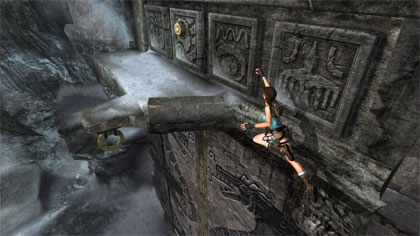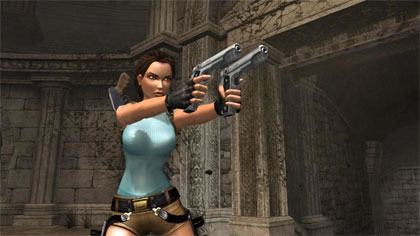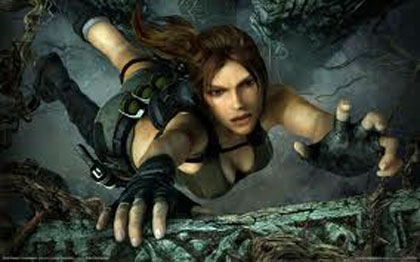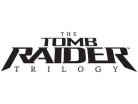- CLASSIC MAGAZINES
- REVIEW CREW
A show recapping what critics thought back
when classic games first came out! - NEXT GENERATION'S BEST & WORST
From the worst 1-star reviews to the best
5-stars can offer, this is Next Generation! - NINTENDO POWER (ARCHIVE)
Experience a variety of shows looking at the
often baffling history of Nintendo Power! - MAGAZINE RETROSPECTIVE
We're looking at the absolutely true history of
some of the most iconic game magazines ever! - SUPER PLAY'S TOP 600
The longest and most ambitious Super NES
countdown on the internet! - THEY SAID WHAT?
Debunking predictions and gossip found
in classic video game magazines! - NEXT GENERATION UNCOVERED
Cyril is back in this spin-off series, featuring the
cover critic review the art of Next Generation! - HARDCORE GAMER MAGAZING (PDF ISSUES)
Download all 36 issues of Hardcore Gamer
Magazine and relive the fun in PDF form!
- REVIEW CREW
- ELECTRONIC GAMING MONTHLY
- ELECTRONIC GAMING MONTHLY RANKS
From Mario to Sonic to Street Fighter, EGM
ranks classic game franchises and consoles! - ELECTRONIC GAMING MONTHLY BEST & WORST
Counting down EGM’s best and worst reviews
going year by year, from 1989 – 2009! - ELECTRONIC GAMING BEST & WORST AWARDS
11-part video series chronicling the ups and
downs of EGM’s Best & Worst Awards!
- ELECTRONIC GAMING MONTHLY RANKS
- GAME HISTORY
- GAME OVER: STORY BREAKDOWNS
Long-running series breaking down game
stories and analyzing their endings! - A BRIEF HISTORY OF GAMING w/ [NAME HERE]
Real history presented in a fun and pithy
format from a variety of game historians! - THE BLACK SHEEP
A series looking back at the black sheep
entries in popular game franchises! - INSTANT EXPERT
Everything you could possibly want to know
about a wide variety of gaming topics! - FREEZE FRAME
When something familiar happens in the games
industry, we're there to take a picture! - I'VE GOT YOUR NUMBER
Learn real video game history through a series
of number-themed episodes, starting at zero! - GREAT MOMENTS IN BAD ACTING
A joyous celebration of some of gaming's
absolute worst voice acting!
- GAME OVER: STORY BREAKDOWNS
- POPULAR SHOWS
- DG NEWS w/ LORNE RISELEY
Newsman Lorne Riseley hosts a regular
series looking at the hottest gaming news! - REVIEW REWIND
Cyril replays a game he reviewed 10+ years
ago to see if he got it right or wrong! - ON-RUNNING FEUDS
Defunct Games' longest-running show, with
editorials, observations and other fun oddities! - DEFUNCT GAMES QUIZ (ARCHIVE)
From online quizzes to game shows, we're
putting your video game knowledge to the test!- QUIZ: ONLINE PASS
Take a weekly quiz to see how well you know
the news and current gaming events! - QUIZ: KNOW THE GAME
One-on-one quiz show where contestants
find out if they actually know classic games! - QUIZ: THE LEADERBOARD
Can you guess the game based on the classic
review? Find out with The Leaderboard!
- QUIZ: ONLINE PASS
- DEFUNCT GAMES VS.
Cyril and the Defunct Games staff isn't afraid
to choose their favorite games and more! - CYRIL READS WORLDS OF POWER
Defunct Games recreates classic game
novelizations through the audio book format!
- DG NEWS w/ LORNE RISELEY
- COMEDY
- GAME EXPECTANCY
How long will your favorite hero live? We crunch
the numbers in this series about dying! - VIDEO GAME ADVICE
Famous game characters answer real personal
advice questions with a humorous slant! - FAKE GAMES: GUERILLA SCRAPBOOK
A long-running series about fake games and
the people who love them (covers included)! - WORST GAME EVER
A contest that attempts to create the worst
video game ever made, complete with covers! - LEVEL 1 STORIES
Literature based on the first stages of some
of your favorite classic video games! - THE COVER CRITIC
One of Defunct Games' earliest shows, Cover
Critic digs up some of the worst box art ever! - COMMERCIAL BREAK
Take a trip through some of the best and
worst video game advertisements of all time! - COMIC BOOK MODS
You've never seen comics like this before.
A curious mix of rewritten video game comics!
- GAME EXPECTANCY
- SERIES ARCHIVE
- NINTENDO SWITCH ONLINE ARCHIVE
A regularly-updated list of every Nintendo
Switch Online release, plus links to review! - PLAYSTATION PLUS CLASSIC ARCHIVE
A comprehensive list of every PlayStation
Plus classic release, including links! - RETRO-BIT PUBLISHING ARCHIVE
A regularly-updated list of every Retro-Bit
game released! - REVIEW MARATHONS w/ ADAM WALLACE
Join critic Adam Wallace as he takes us on a
classic review marathon with different themes!- DEFUNCT GAMES GOLF CLUB
Adam Wallace takes to the links to slice his way
through 72 classic golf game reviews! - 007 IN PIXELS
Adam Wallace takes on the world's greatest spy
as he reviews 15 weeks of James Bond games! - A SALUTE TO VAMPIRES
Adam Wallace is sinking his teeth into a series
covering Castlevania, BloodRayne and more! - CAPCOM'S CURSE
Adam Wallace is celebrating 13 days of Halloween
with a line-up of Capcom's scariest games! - THE FALL OF SUPERMAN
Adam Wallace is a man of steel for playing
some of the absolute worst Superman games! - THE 31 GAMES OF HALLOWEEN
Adam Wallace spends every day of October afraid
as he reviews some of the scariest games ever! - 12 WEEKS OF STAR TREK
Adam Wallace boldly goes where no critic has
gone before in this Star Trek marathon!
- DEFUNCT GAMES GOLF CLUB
- DAYS OF CHRISTMAS (ARCHIVE)
Annual holiday series with themed-episodes
that date all the way back to 2001!- 2015: 30 Ridiculous Retro Rumors
- 2014: 29 Magazines of Christmas
- 2013: 29 Questionable Power-Ups of Christmas
- 2012: 34 Theme Songs of Christmas
- 2011: 32 Game Endings of Christmas
- 2010: 31 Bonus Levels of Christmas
- 2009: 30 Genres of Christmas
- 2008: 29 Controls of Christmas
- 2007: 34 Cliches of Christmas
- 2006: 33 Consoles of Christmas
- 2005: 32 Articles of Christmas
- 2004: 31 Websites of Christmas
- 2003: 29 Issues of Christmas
- 2002: 28 Years of Christmas
- 2001: 33 Days of Christmas
- NINTENDO SWITCH ONLINE ARCHIVE
- REVIEW ARCHIVE
- FULL ARCHIVE
Tomb Raider Trilogy
I need a girl like Lara Croft. She's a no-nonsense kind of gal who has a knack for solving ancient mysteries and getting the goods. She's also great at killing dinosaurs, climbing up giant mountains, swimming and hand-to-hand combat, but I don't need any of those skills at the moment. I just need somebody who will search the ends of the earth looking for the answer to the ultimate mystery: Why this game is called The Tomb Raider Trilogy.
Going in I figured this had to be a collection of the first three Tomb Raider games, released between 1996 and 1998. But I was wrong. Instead this is a budget-priced compilation of Tomb Raider Legend (2006), Tomb Raider Anniversary (2007) and Tomb Raider Underworld (2008). All three of these games are exciting action games full of complex puzzles, high adventure and huge set pieces that like to explode. But how are these three games a trilogy?

Oh sure, all three of these games came out within a year of each other. All three of these games are using a variation on the same control scheme and even character models. And I suppose these are the three most recent Tomb Raider games. But it's hard to call something a trilogy when there are nine main series games (and a tenth on the way). And besides, Tomb Raider Anniversary is a remake of the first game, which makes calling this a trilogy even more confusing.
Even if the name doesn't make a whole lot of sense, The Tomb Raider Trilogy offers enough excellent content to keep your mind off of the matter for at least a few weeks. All three of these games make a strong argument for why people should care about Lara Croft's continuing adventures, though it's clear from this $40 compilation that there's still some room to grow.

In case you missed the Tomb Raider series, you play adventure-seeker Lara Croft. She's equal parts Indiana Jones and a pin-up model; kicking butt, solving centuries-old puzzles and, most importantly, looking good doing it. The formula hasn't changed much since the first game, though we certainly saw a nice evolution of the scope from one game to the next.
Up first is Tomb Raider Legend, the 2007 game that singlehandedly made Lara Croft relevant again. With a brand new engine, an ambitious story and a decade to work out the franchise's many kinks, Legend delivered. The diverse levels, exotic backdrops and fast-paced narrative made this the first must-own Tomb Raider game since the series inception. Now four years later the game doesn't feel nearly as fresh, but Lara's adventure is still worth experiencing.
The second game in the collection is Tomb Raider Anniversary, a remake of the original 1996 game. Anniversary uses the same graphics engine and gameplay as Legend to modernize the good, but woefully out of date adventure game. Traversing the huge caverns is a breeze in this remake, though I still found myself getting lost in the labyrinthine level designs. Although this remake was released in 2007 and hit the Xbox 360, this is Anniversary's first appearance on the PlayStation 3. The updated graphics look good, but the real star here is the effortless control.
The final game of this "trilogy" is Tomb Raider Underworld, a game that has already been released on the PlayStation 3. Unlike Legend and Anniversary, you won't find any graphical enhancements in Underworld.

No matter how you cut it, there's a lot of content in The Tomb Raider Trilogy. While the three games vary in length, it's going to take you a few dozen hours to see all three credit sequences. In that time our hero will search for the mysteries surrounding King Arthur's Sword in the Stone, the Holy Grail, Norse mythology and even dinosaurs. This series covers a lot of ground, and it's all available on this awfully convenient Blu-Ray disc.
Both Legend and Anniversary feature upgraded graphics, though the two games still look outdated by today's standards. The game boasts that they are "remastered in high definition," however they don't look much different from the Xbox 360 versions released a few years ago. The difference is night and day when comparing it to the PlayStation 2 games, which were shipped late in that console's life. Of the three, Underworld is understandably the most visually impressive.

On top of the (mostly) improved graphics, The Tomb Raider Trilogy also features an incredible amount of bonus content. The most interesting content involves the multiple making-of videos, which not only shows how these games were developed, but also help fill in the history of Lara Croft. My only complaint is that there's not more of it. I would love to see them go deeper into the Tomb Raider misfires and what they took from those experiences.
By refining the control mechanics, adding some much-needed variety and improving the graphics, Crystal Dynamics has a real winner on its hands. The upgraded graphics may not be enough for veterans of the series to buy these games a second time, but anybody looking for a lot of high-stakes adventure at a budget price should climb whatever mountain stands in the way of their local game store.
HOME |
CONTACT |
NOW HIRING |
WHAT IS DEFUNCT GAMES? |
NINTENDO SWITCH ONLINE |
RETRO-BIT PUBLISHING
Retro-Bit |
Switch Planet |
The Halcyon Show |
Same Name, Different Game |
Dragnix |
Press the Buttons
Game Zone Online | Hardcore Gamer | The Dreamcast Junkyard | Video Game Blogger
Dr Strife | Games For Lunch | Mondo Cool Cast | Boxed Pixels | Sega CD Universe | Gaming Trend
Game Zone Online | Hardcore Gamer | The Dreamcast Junkyard | Video Game Blogger
Dr Strife | Games For Lunch | Mondo Cool Cast | Boxed Pixels | Sega CD Universe | Gaming Trend
Copyright © 2001-2025 Defunct Games
All rights reserved. All trademarks are properties of their respective owners.
All rights reserved. All trademarks are properties of their respective owners.





























